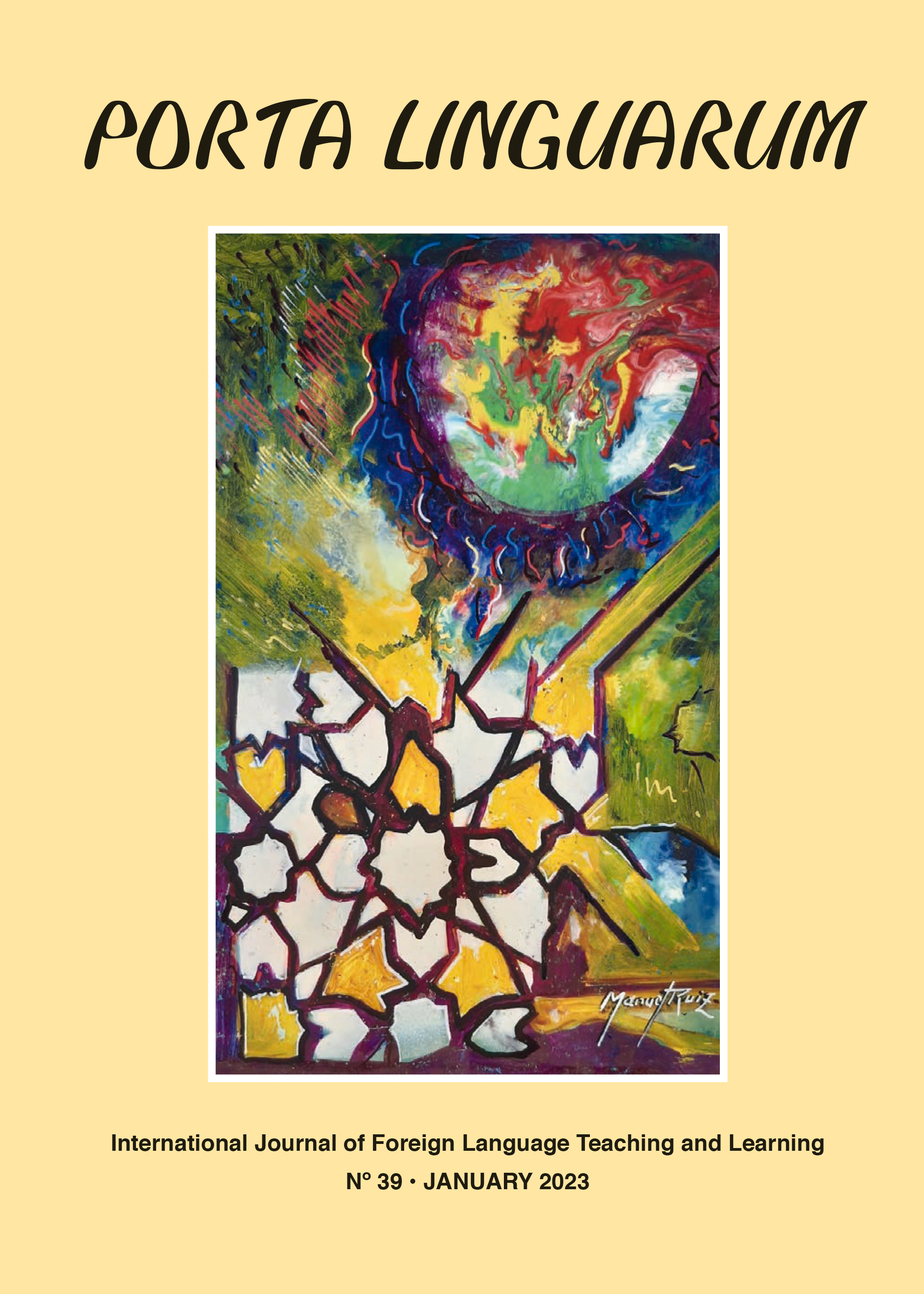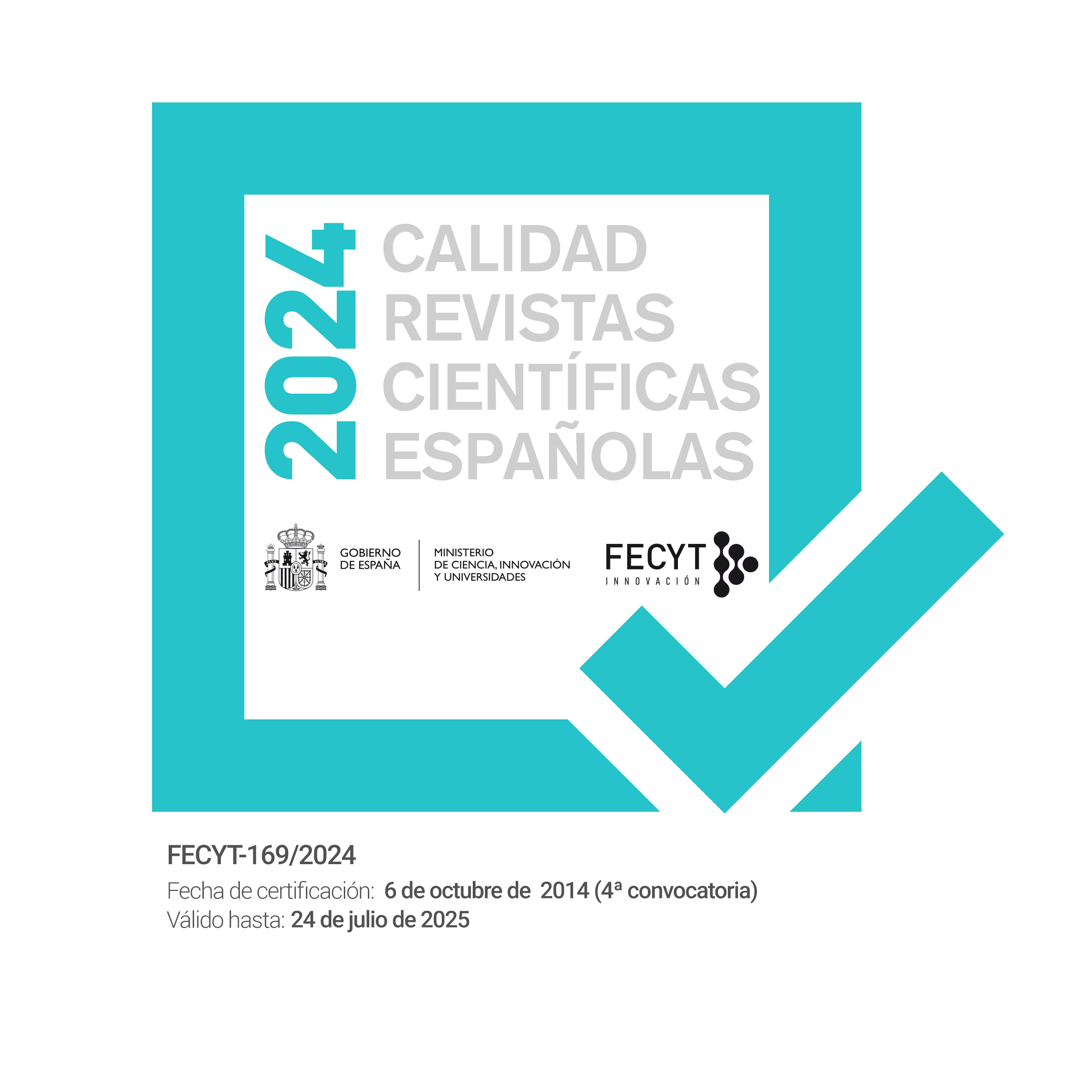A Research about changes in oral productive communication strategies in English Mention Teaching Degree students
DOI:
https://doi.org/10.30827/portalin.vi39.26026Keywords:
Oral competence, oral communication strategies, oral productive skill, foreign language learning, Primary Education CurriculumAbstract
This research aims to provide information about changes that may occur on the strategies declared to solve oral production problems by future teachers of English as a foreign language in Primary Education according to Nakatani's Inventory of Oral Communication Strategies (2006). The participants are students of English Teaching, these belong to the University of Granada (UGR), the University of Malaga (UMA) and the María Inmaculada de Antequera (Málaga) Associated Teaching Center (CAMMIA). The data was taken in two stages or moments, at the beginning of the Mention of English and at the end of it. In this research, a descriptive study is carried out for the initial phase, since the number of volunteer participants was greater than in the final sample. For the final sample, the results were statistically analyzed and compared. Only in strategies number 3 and 5 some significant changes take place. There have also been changes in the other types of strategies, although no significant changes have been obtained. It could be concluded that perhaps a specific instruction during the Mention would have contributed to the greater differences between the use of this type of strategies between the moment the Mention began and the moment it ended.
Downloads
References
Bachman, L. F. (1990). Fundamental Considerations in Language Testing. Oxford: Oxford University Press
Bialystok, E. (1990). Communication strategies. Oxford: Blackwell.
Canale, M. (1983). From communicative competence to communicative pedagogy. En J. C. Richards y R. W. Schmidt (eds.). Language and Communication. Nueva York: Lomgman.
Canale, M. y Swain, M. (1980). Theoretical basis of communicative approaches to second language teaching and testing. Applied Linguistics.
Celce-Murcia, M., Dörnyei, Z. y Thurrell, S. (1995). Competencia comunicativa: un modelo pedagógicamente motivado con especificaciones de contenido. Cuestiones de lingüística aplicada, 6 (2), 5-35.
Centro Virtual Cervantes (2020). Diccionario de términos clave de ELE. España: Instituto Cervantes.
Clennell, C. (1994). Investigating the use of communication strategies by adult second language learners: A case for trusting your own judgment in classroom research. TESOL Journal, 3, 32-35.
Clennell, C. (1995). Communication strategies of adult ESL learners: A discourse perspective. Prospect, 10(3), 4-20. Clennell, C. (1996). Promoting the role of English prosody in a discourse-based approach to oral interaction. Prospect, 11(3), 17-28.
Consejo de Europa (2002). Marco Común Europeo de Referencia para las Lenguas: Aprendizaje, Enseñanza y Evaluación (Ministerio de Educación, Cultura y Deporte, Trad.). Madrid: Grupo Anaya (Publicación original, 2001)
Corder, S. P. (1983). A role for the mother tongue. Language transfer in language learning, 1, 85-97.
Dornyei, Z. (1995). Sobre la enseñabilidad de las estrategias de comunicación. TESOL trimestral , 29 (1), 55-85.
Dörnyei, Z., & Scott, M. L. (1995, March). Communication stragegies: An empirical analysis with retrospection. In Deseret Language and Linguistic Society Symposium (Vol. 21, No. 1, pp. 137-150).
Faerch, C., & Kasper, G. (1984). Two ways of defining communication strategies. Language learning, 34(1), 45-63.
Kotschi, T. (1996). Procedimientos de producción y estructura informacional en el lenguaje hablado. El español hablado y la cultura oral en España e Hispanoamérica, Frankfurt/Madrid, Vervuert/Iberamericana, 185-206.
Mirzaei, A., & Heidari, N. (2012). Exploring the Use of Oral-Communication Strategies by (Non) Fluent L2 Speakers. Journal of Asia TEFL, 9(3).
Nakatani, Y. (2006). Developing an oral communication strategy inventory. The modern language journal, 90(2), 151-168.
Orden de 15 de enero de 2021, por la que se desarrolla el currículo correspondiente a la etapa de Educación Primaria en la Comunidad Autónoma de Andalucía, se regulan determinados aspectos de la atención a la diversidad, se establece la ordenación de la evaluación del proceso de aprendizaje del alumnado y se determina el proceso de tránsito entre distintas etapas educativas. Boletín Oficial de la Junta de Andalucía: Seville, Spain.
Oxford, R. (2001). Language learning strategies, proficiency, and autonomy: What they mean in the new millennium. In Symposium conducted at the meeting of the Deseret Language and Linguistics Society, Provo, Utah.
Politzer, R. L. (1983). An exploratory study of self reported language learning behaviors and their relation to achievement. Studies in second language acquisition, 6(1), 54-68.
Politzer, R. L., & McGroarty, M. (1985). An exploratory study of learning behaviors and their relationship to gains in linguistic and communicative competence. TESOL quarterly, 19(1), 103-123.
Poulisse, N., & Schils, E. (1989). The influence of task‐and Proficiency‐Related factors on the use of compensatory strategies: A quantitative analysis. Language learning, 39(1), 15-46.
Rubin, J. (1987). Learner strategies: Theoretical assumptions, research history and typology. Learner strategies in language learning, 15, 29.
Selinker, L. (1972). Interlanguage. IRAL, 10, 209– 231.
Stern, H. H., & Allen, J. P. B. (1992). Issues and options in language teaching. Oxford University Press, USA.
Tarone, E. (1980). Communication strategies, foreigner talk, and repair in interlanguage 1. Language learning, 30(2), 417-428.
Tarone, E. (1981). Some thoughts on the notion of communication strategy. TESOL quarterly, 15(3), 285-295.



















